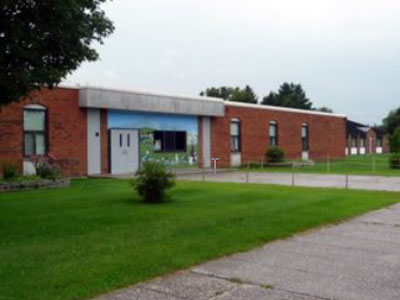 (Richford, VT) One of the greatest challenges teachers face with their classrooms is making sure their students are staying on task and engaging with their lessons. When new technology is placed into the situation, one might think that it could create more distractions for students. However, in Richford Elementary classrooms it has had the opposite effect; teachers have noticed a dramatic improvement in student participation and on-task behavior. Made possible by the e-Vermont initiative, Digital Wish has established one-computer-per-one-child computing in both 5th grade classrooms at Richford. As a result, the 5th grade students not only have their own individual Dell netbooks to work with, but have also received lessons from a Digital Wish trainer each week on how to use the computers, Web 2.0 applications, and the Internet responsibly and competently. Training like this is essential for the success and sustainability of any 1:1 initiative. Teachers and students alike must be empowered to use the tools and resources available to them effectively.
(Richford, VT) One of the greatest challenges teachers face with their classrooms is making sure their students are staying on task and engaging with their lessons. When new technology is placed into the situation, one might think that it could create more distractions for students. However, in Richford Elementary classrooms it has had the opposite effect; teachers have noticed a dramatic improvement in student participation and on-task behavior. Made possible by the e-Vermont initiative, Digital Wish has established one-computer-per-one-child computing in both 5th grade classrooms at Richford. As a result, the 5th grade students not only have their own individual Dell netbooks to work with, but have also received lessons from a Digital Wish trainer each week on how to use the computers, Web 2.0 applications, and the Internet responsibly and competently. Training like this is essential for the success and sustainability of any 1:1 initiative. Teachers and students alike must be empowered to use the tools and resources available to them effectively.
“When each student receives their own computer for school use, a sense of individual ownership and responsibility can be fostered, which is then applied to their work both in the classroom and at home,” stated Meg Krohn, the Digital Wish classroom trainer. As the year progressed, students who previously struggled with staying on task for classwork, and listening to the teacher’s instructions, began to show a greater focus with each Digital Wish lesson, and were more responsive to questions and instructions. Not only were students demonstrating greater responsibility with completing their own work, but they were also more active helping their peers who had trouble with tasks and were collaborating on assignments more. By utilizing a 1:1 model, complemented with a broadband Internet connection, Richford students have received a more efficient individual workspace, and effectively improved engagement and participation during their school day. The result has been better classroom behavior, where technology compliments, rather than takes over, the student’s learning.
